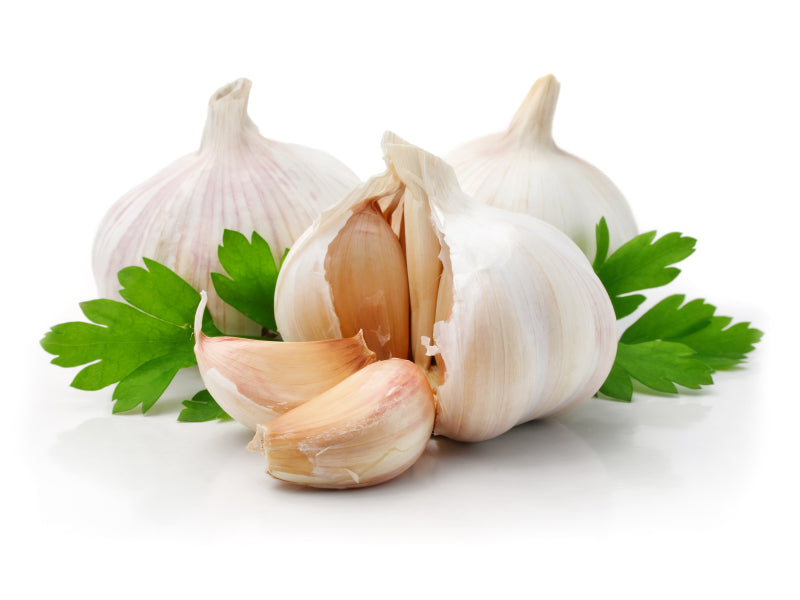“Our findings suggest that dietary administration of garlic containing allyl sulfide could help maintain healthy gut microorganisms and improve cognitive health in the elderly,” says Jyotirmaya Behera, Ph.D., who lead the research team with Neetu Tyagi, Ph.D., both from University of Louisville. “The diversity of the gut microbiota is diminished in elderly people, a life stage when neurodegenerative diseases such as Alzheimer's and Parkinson's develop and memory and cognitive abilities can decline,” added Tyagi. “We want to better understand how changes in the gut microbiota relate to aging-associated cognitive decline.”
Additional experiments revealed that reduced gene expression of neuronal-derived natriuretic factor (NDNF) in the brain was likely responsible for the cognitive decline. This gene was recently discovered by the researchers and is required for long-term and short-term memory consolidation. The researchers found that mice receiving the garlic compound exhibited higher levels of NDNF gene expression. In addition, recombinant-NDNF protein therapy in the brain restored the cognitive abilities of the older mice that did not receive the garlic compound. The researchers also found that oral allyl sulfide administration produces hydrogen sulfide gas, a messenger molecule that prevents intestinal inflammation, in the gut lumen. The researchers are continuing to conduct experiments aimed at better understanding the relationship between the gut microbiota and cognitive decline and are examining how garlic might be used as a treatment in the aging human population.
What We Know And Don’t Know About Garlic
Humans and garlic have quite a history. The plant has been part of our meals and medical practices since antiquity; scholars believe the Greeks and Romans used garlic to increase endurance in workers and soldiers, while physicians in ancient China suggested eating it alongside meat to aid in digestion.
Although dozens of studies on the compounds in garlic have concluded that they likely help protect against the development of heart disease, diabetes and even cancer, the results of clinical trials on its effectiveness as a whole in humans have been mixed. A paper published in the academic journal Trends In Pharmacological Sciences by a team of researchers from the University of Nottingham breaks down the problem by explaining what we do and don’t know about what makes the little white bulbs so beneficial.
As it turns out, garlic’s chemical makeup can get pretty complex once it’s being used in the kitchen. As garlic grows, it absorbs sulfur compounds that are present in the soil - a trait it shares with its fellow members of the Allium family, which includes other distinctly-flavored vegetable species such as onions, shallots and leeks. Garlic uses these sulfur compounds to produce amino acids, the building blocks of protein, or hangs onto them for later in the form of sulfur storage molecules.
Complicated Compounds
These molecules break down into as many as 50 different compounds when garlic is cooked or eaten. That’s where things get complicated: The compounds you get depend on how the plant is prepared. For example, chopping fresh garlic leads to the formation of different compounds than you would find in black garlic, a preparation of the plant that involves cooking it at high heat for nearly a month, while the oil that comes from distilling garlic contains yet another set of sulfur compounds.
The benefits garlic has on the human body could differ depending on which of its many compounds is being examined. That could help explain why some clinical trials have shown that the plant has benefits in humans while others haven’t; preparing garlic in some ways could produce more of the good-for-you compounds than others.
As for exactly how the compounds in garlic are exerting their effects, the scientists think the answer could lie in the way they interact with gaseous signaling molecules, a group of compounds that regulate various processes in the body by affecting how cells communicate. Lower levels of these signaling molecules, such as nitric oxide, have been implicated in heart disease and cancer development. Previous studies have postulated that some of the compounds in different preparations of garlic may increase the concentration of these molecules, which could explain its benefits.
Overall, research suggests that while garlic is probably good for us, we still have a long way to go in terms of understanding the mechanism behind the plant’s benefits. Continuing to examine how garlic affects gaseous signaling molecules could yield some answers, as could reassessing the methods we use to research it in clinical trials. While it’s unlikely that the plant is a “magic bullet” for curing cancer or heart conditions, the researchers noted, knowing how it mediates the risk of developing disease could help us find ways to harness and make the most of its benefits.
Subscribe to our Trusted Health Club newsletter for more information about natural living tips, natural health, oral health and skincare. If you are looking for more health resources check out the Trusted Health Resources list.
Written By:
Lisa S. Jones is a certified nurse, nutritionist, fitness coach and health expert. Her training credentials include a B.Sc. in Nursing from California State University in 2013 and Youth Nutrition Specialist Certification from the American Fitness Professionals and Associates in 2015. In 2017, she also received Holistic Nutrition Certification from the American Fitness Professionals and Associates.
Reviewed By:
Founder Ray Spotts has a passion for all things natural and has made a life study of nature as it relates to health and well-being. Ray became a forerunner bringing products to market that are extraordinarily effective and free from potentially harmful chemicals and additives. For this reason Ray formed Trusted Health Products, a company you can trust for clean, effective, and healthy products. Ray is an organic gardener, likes fishing, hiking, and teaching and mentoring people to start new businesses. You can get his book for free, “How To Succeed In Business Based On God’s Word,” at www.rayspotts.com.
Photo by Luca Volpe on Unsplash




